Portfolio: Mixed Media Sculpture
- Ede Series 2
- Chloe Essie Series 1
- Ede Series 1
- Ede Series 1 (Interior)
- Ede Series 3 (Front)
- Ede Series 3 (Back)
- Ede Series 3 (Detail)
- Ede Series Mourning Fan (Back)
- Ede Series Mourning Fan (Front)
- Ede Series Mourning Fan (Detail)
- Slew Series Family Portrait 2 (Closed)
- Slew Series Family Portrait 1 (Open)
- Ruby Series 4
- Willard 1
Linda McCune abandoned early success as an abstract painter to explore mixed-media sculpture deeply connected to place and family. Her new direction coincided with a moment in the 1980s that saw an exponential growth of interest in art by and about women. McCune’s work addresses materiality and the ancestral and psychic connections that bind people to each other over place and time. Her sculpture and more recent drawing series constitute a diverse body of work based on shared issues she has sustained for over three decades. She exhibits widely, from the West Coast to a recent show in New York City, and continues to explore the ever-changing issues and relationships of our accelerated world.
Artist Statement
Separation from my extended family and the west Tennessee landscape has led to an obsessive need to preserve the rural content that has been an integral part of my being and provided me with visual sustenance while in my current state of constant city transience. The interwoven visuals in my series are embedded with the personalities and deep strengths of my loved ones. Along with my longing for them, I seek to honor and memorialize them. These sculptures and drawings are ligatures—direct connections to the past—and each detail is a repository of their existence. The elements in these objects are not to be viewed only as ornamentation, and the details within the works should be carefully considered, as they are intended to convey a specific message. These mimetically stated, symbolic objects have an even richer abstract metaphorical language inherent in their shared use of the materials and in the content of the craft used to produce them. As objects, they have a familiar formal and informal ritual base. This combination of commonly used objects, such as a hope chest or mourning fan, enhanced by aged surfacing and underlying message, offer the most possibilities for exploration of visually communicating the emotional and for providing increased content readability. With a likeness in character between the form choice and the content, the related visual and written parts of these works are accessible and can, I believe, produce associations from common experiences found within the interactions of many families, especially in the South.
Although my involvement in the research and making of other series also have great importance now, these expiative documentary works retain their urgency and vitality for me because of this attachment to, and concern for, the preservation of personal and familial histories. In these works, an understanding of a settled generation past and the very real and transient present, with its emotional and ethical struggles, join and give support to each other in this separation. Both magnify the continuum of the universal, leveling effect of time on all who long for an everlasting reunion.
Series Content Notes
Ede Series 1–5: Because there are four sisters and a brother in my immediate family who have had full and long lives, I was compelled in remorseful grieving to make the five children that I lost viable through their memorial preservation in Ede 1’s hope chest. Its making helped with the grief transitions of stating that they are my children, they have names that are recorded and embroidered on their gowns, and their lives are important even if they lived only for a short time. Ede 3 records the joy of the births of my daughters. These two live-birth children, with my husband and I carrying them, are shown on Ede 5’s mourning fan and on the Slew Series Family Portrait 1. My experience with wanting children is recorded in Ede 2. A part is added every tenth year to this ongoing work owned by the SC State Art Collection. I am engaged now in the sixth part of Ede 2 that will record the last ten years, which presents the marriages of both my daughters and the birth of my grandsons. Experiencing the growth of my own family, their inevitable separation as persons who need to care for their families, and the transient lives of us all seems to mirror the contemporary dilemma of job searches and financial stability away from the single-family farm life that was my idyllic childhood. Not shown is Family Portrait 2 that shows my Grandmother Ruby, her firstborn daughter, my mother, me as her firstborn daughter, and my two daughters. The Ede and Slew Series works were indeed made as private statements, but when exhibited have proven to be a comfort to women who have had similar experiences.
Essie Series 1, Ruby Series 4, and Willard Series 1: The Essie works are remembrances of Chloe Essie Gauldin Bradford, a great-aunt living on “the next farm over” who had the richness of a “green thumb” with the sadness of an end of life in Bolivar State Mental Hospital. Ruby, her sister, and my grandmother through financial frugality during the Depression bought land for my mother and uncle to add to the holdings of the family farm, therefore preserving the ability of new members to make a living at home. The Ruby Series is dedicated to her strength and forethought. Though the documents are a “cabinet of curiosities” in the way the deeds are written and lands are recorded. Willard Charles Williams, my father, and my uncles built houses for everyone out of wood felled and milled on our land, with barns and smokehouses to preserve meat for survival. In the Willard work, smokehouse wood was gathered from my mother’s farm and is a visual of family members clinging to its rafters and being warmed by its quilt.


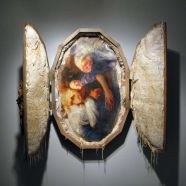





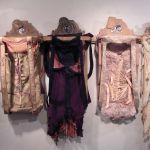
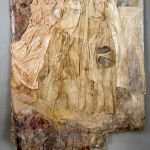
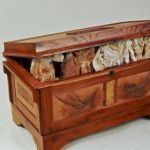
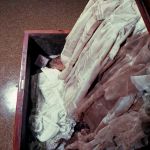
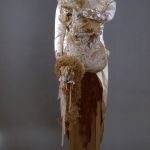
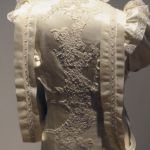
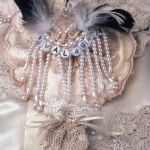
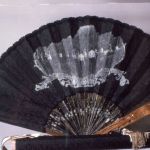
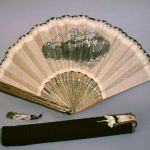
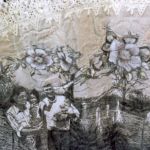
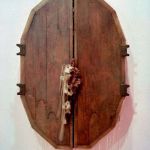
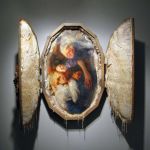
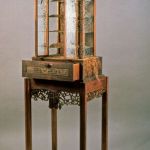
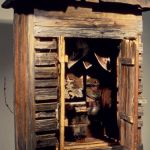
An interesting view into the life and times of an inspirational artist and favored teacher.
A wonderful collection of work demonstrating how the simple things of life can convey deep emotion and root us to the gift of family and memories both grand and sad. Work like this sends us all in search of similar but unique symbols of our own lives and the lives of those precious to us.